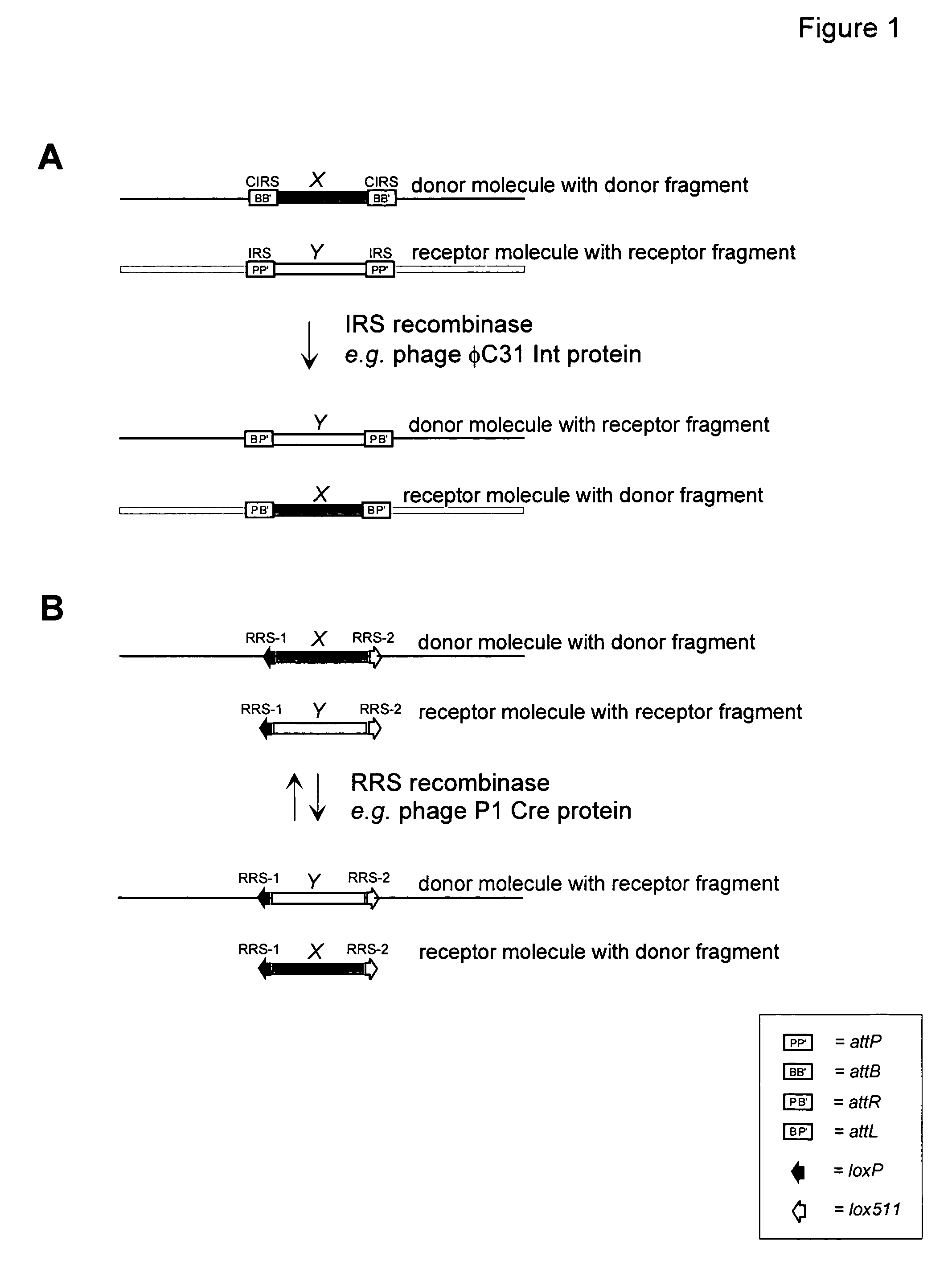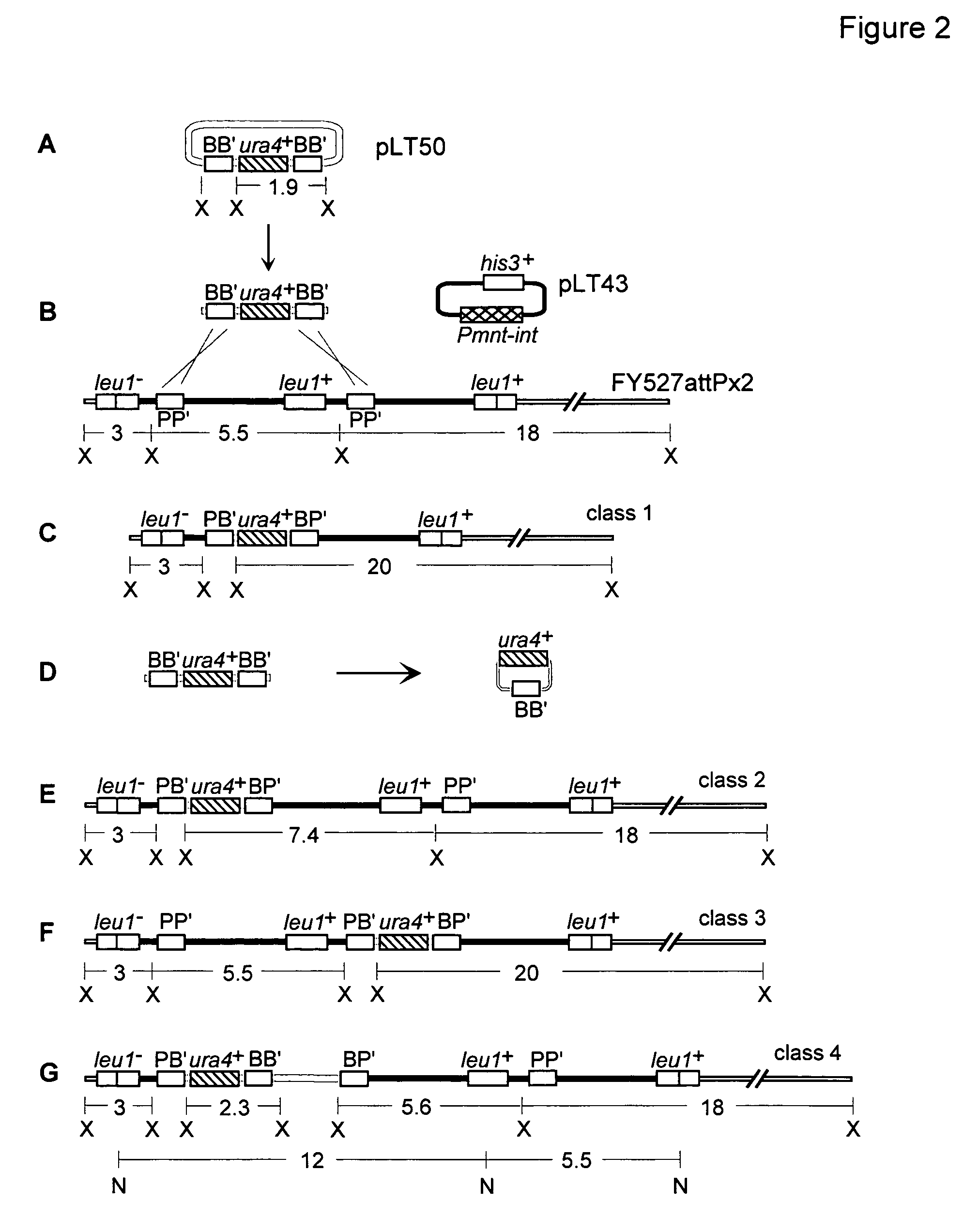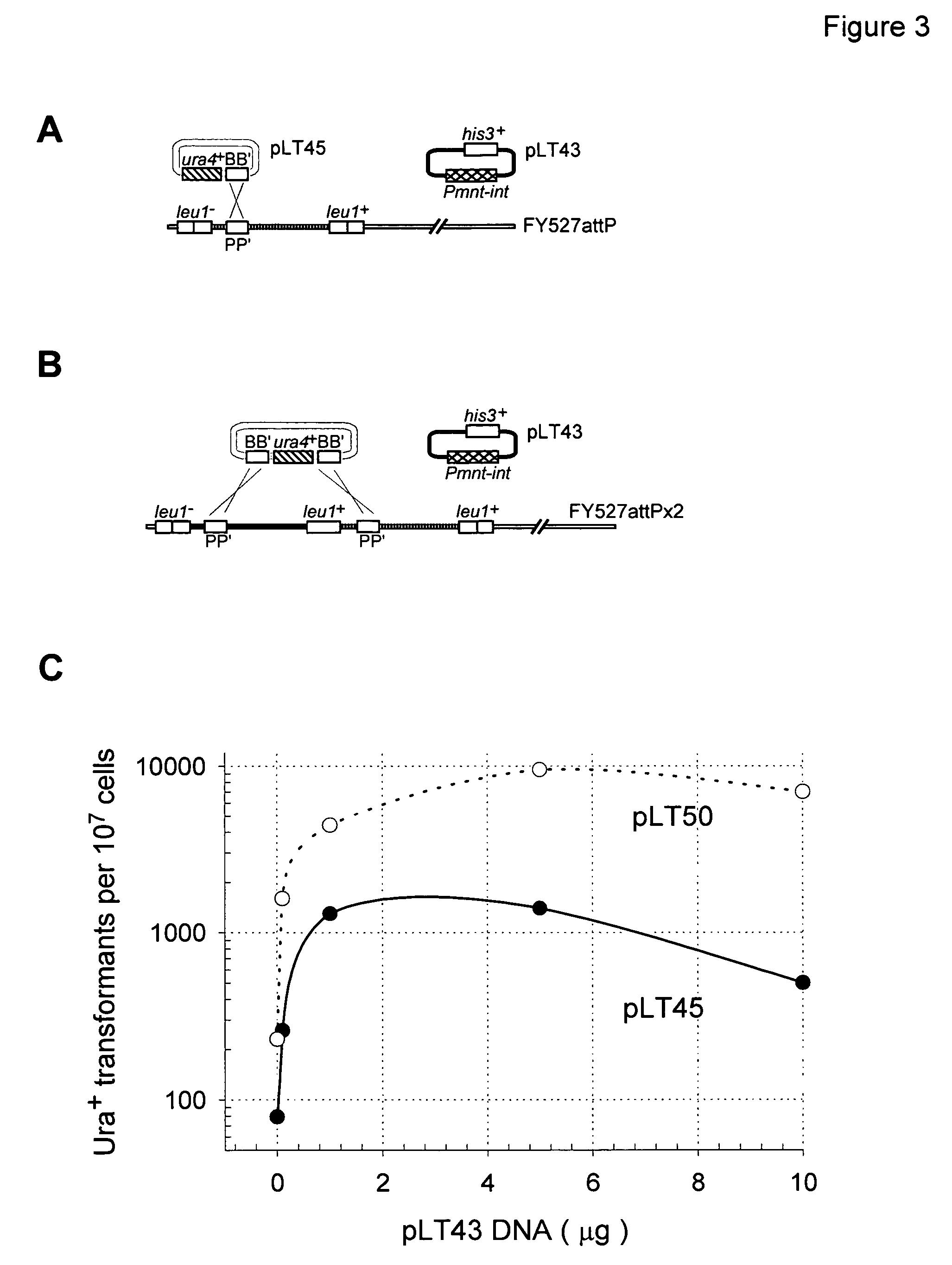Methods for the replacement, translocation and stacking of DNA in eukaryotic genomes
a technology of eukaryotic genome and dna, which is applied in the field of dna replacement, translocation and stacking of eukaryotic genome, can solve the problems of difficult to maintain the original structure, unsuitable commercial use, and repetitive dna, and achieves the effects of reducing the number of single-copy circular substrates, high efficiency, and high percentag
- Summary
- Abstract
- Description
- Claims
- Application Information
AI Technical Summary
Benefits of technology
Problems solved by technology
Method used
Image
Examples
example 1
Gene Replacement Using Linear or Circular Targeting Constructs
[0085]This Example demonstrates that the Streptomyces bacteriophage φC31 site-specific recombination system functions in a gene replacement strategy in eukaryotic cells. The strategy makes use of a site-specific integration system, such as the system derived from bacteriophage φC31. Insertion of the circular phage DNA chromosome into the bacterial genome requires a single polypeptide φC31 protein, the integrase, encoded by int, that recombines the bacterial and phage attachment sites attB and attP, respectively, to form new hybrid sequences known as attL and attR. The attB and attP sites share only 16 base pair matches within a 53 bp stretch centered at the point of crossover. Here, the designations BB′, PP′, BP′ and PB′, will be used interchangeably for attB, attP, attL and attR, respectively. Inverse orientations of attB, attP, attL and attR are designated as B′B, P′P, P′B and B′P, respectively.
Materials and Methods
Reco...
example 2
Inserting the Coding Region for Expression Behind a Genomic Promoter
[0103]This example illustrates a general strategy to deliver a DNA fragment to a designated animal chromosome target by a gene replacement strategy that does not require the co-introduction of a selectable marker. Because a replacement strategy results in the loss of a corresponding fragment of host DNA, the loss of a counter-selectable marker can be the selection criteria for gene replacement. This approach results in the precise integration of a trait gene without incorporating additional unneeded DNA.
[0104]This example also illustrates that this method is useful for testing the functional expression of a cDNA molecule through its direct placement behind a genomic promoter resident in the host cell. This bypasses the need for prior cloning of the cDNA into a vector for propagation in E. coli, such as into a plasmid or phage vector. An investigator can choose a gene sequence from the database, make the appropriate ...
example 3
Gene Replacement in the Human Genome
[0107]This example illustrates a more specific strategy than in Example 2 to deliver a DNA fragment to a designated mammalian chromosome target. Preferably, the mammalian chromosome target is a human chromosome target. This example shows that a cDNA molecule can be inserted site-specifically behind a genomic target promoter for expression in the sense or antisense orientation. As the phenotypes conferred by expression of that cDNA may reveal clues to gene function, this cDNA integration strategy could be a tool for functional genomics analysis.
Methods
[0108]Standard cloning methods were used throughout. E. coli strain JM109 [F′traD36 lacIq D(lacZ)M15 proA+B+ / e14-(McrA−) D(lac-proAB) thi gyrA96(Nalr) endA1 hsdR17(rk-mk+) relA1 supE44], used for DNA cloning, was grown in Luria Broth.
Control hpt Expression Construct.
[0109]An hpt fragment, the coding region of the hygromycin resistance gene, was retrieved by SalI cleavage from p35S-hpt (...
PUM
| Property | Measurement | Unit |
|---|---|---|
| annealing temperature | aaaaa | aaaaa |
| structure | aaaaa | aaaaa |
| integration structure | aaaaa | aaaaa |
Abstract
Description
Claims
Application Information
 Login to View More
Login to View More - R&D
- Intellectual Property
- Life Sciences
- Materials
- Tech Scout
- Unparalleled Data Quality
- Higher Quality Content
- 60% Fewer Hallucinations
Browse by: Latest US Patents, China's latest patents, Technical Efficacy Thesaurus, Application Domain, Technology Topic, Popular Technical Reports.
© 2025 PatSnap. All rights reserved.Legal|Privacy policy|Modern Slavery Act Transparency Statement|Sitemap|About US| Contact US: help@patsnap.com



